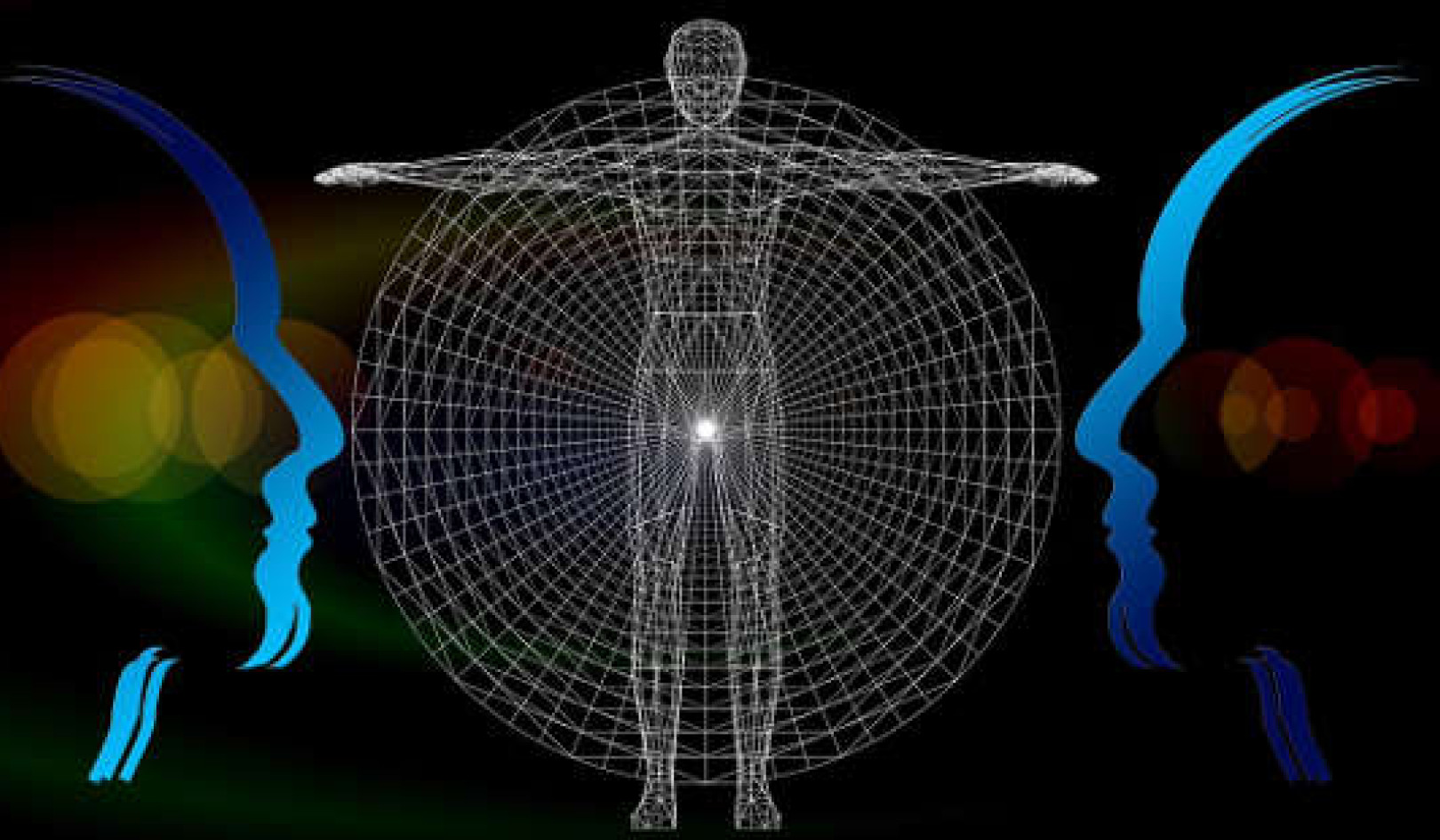
Photo Credit: U.S. Air Force illustration/Airman 1st Class Joshua Green
Prior to becoming a therapist, I believed as the majority of people still do, that trauma and subsequent PTSD are experienced by only a small portion of the population and limited primarily to combat soldiers and first responders such as firefighters, police and EMT’s; as well as residents of war-torn countries and victims of catastrophic events.
Having now worked in the field of mental health counseling for more than ten years, in which the first five were spent facilitating intensive in-home services for children and families considered ‘at-risk’, I now understand that trauma affects everyone, including myself.
Distilling Trauma To Its Very Essence
So let’s find out how and why this is possible and because this is a very BIG subject; I am offering, for your consideration, a homeopathic overview; one that has been distilled down to its very essence in order to provide a concise understanding within a very limited forum.
Experts within the field of trauma have identified that there are essentially two ways in which an individual can experience trauma.
Shock trauma occurs in response to a specific event such as an accident, catastrophic event, serious illness, surgery or the sudden and unexpected loss of a loved one.
Developmental trauma, on the other hand, is experienced through chronic emotional, psychological, physical or sexual abuse and/or extreme poverty throughout childhood, spanning critical stages of development. As of 1997, statistics indicated that 1 in 3 women and 1 in 5 men in the U.S. had been sexually abused before the age of eighteen and that between 75 and 100 million Americans had experienced childhood sexual and/or physical abuse.
Trauma changes you forever and results in a wide variety of symptoms including, but not limited to; flashbacks, inability to focus, panic attacks, insomnia, depression, anxiety, short attention spans, destructive behaviors and rage. Most, if not all, expressions of mental illness and emotional instability have trauma as an antecedent.
Understanding Trauma
In order to understand trauma we must briefly visit the human brain which is often referred to as the ‘trine brain’ because it is made up of three parts; the reptilian brain (instinctual), the mammalian or limbic brain (emotional) and the human or neo-cortex brain (rational). When an individual is faced with an overwhelming or life-threatening event; the reptilian/instinctual brain along with our nervous system becomes highly activated or ‘charged’ in response to the threat. This response is involuntary and instinctual, causing the body to ‘freeze’ in response to the threat. This immobilization causes the mind to go into an altered state ensuring that no pain is experienced.
Trauma is physiological and will often involve a wide variety of responses including, but not limited to; immobility, panic, inability to breathe or speak and numbness in the body. These responses are a result of the ‘energetic charge’ and activation of the nervous system being compressed within the experience of immobilization. These mechanics protect us from feeling and often remembering the event. Due to the mind-altering component, trauma ends up being a multidimensional, physiological experience that is almost always difficult to articulate even when it is remembered.
This ‘energetic charge’ which was mobilized to negotiate the threat must be discharged or it becomes a cellular imprint encoded in the physical body as a memory which could eventually inform a whole host of physical and emotional expressions of disease. Physical movement at the time of the event is critical in being able to discharge the compressed or ‘flash-frozen’ energy so as not to experience any adverse symptoms as a result of staying immobilized.
Unresolved Trauma
Unresolved trauma can lead to a lifetime of victimology and dysfunctional behavioral/relationship patterns. The individual becomes guarded, employing a multitude of defense mechanisms to ensure that they don’t feel the pain that would be associated with the original trauma(s).
In addition, there is an unconscious attempt to revisit the original trauma(s) in order to resolve what had become deeply encoded in the physical body. This often results in the individual cycling through patterns of trauma throughout their entire lifetime such as accidents and injuries, all of which typically occur within the context of high drama. Adrenals which were activated as part of the nervous system becoming ‘charged’ at the time of the original trauma(s) end up being chronically activated as part of this cyclical phenomenon.
After a while, the experience becomes normalized as a way of being and we now have an entire population suffering from adrenal fatigue as a result of being addicted to the cyclical pattern which results in a myriad of chemicals and hormones being secreted throughout the brain and the body. Most, if not all, of my clients who come to see me are initially encouraged to start taking liquid adrenal support as part of their recovery process.
Victim or Survivor Identity
Because trauma is physiological, the healing of trauma is a process that can only be accessed by developing more conscious, ‘body-centered’, awareness. There is no need to participate in years of therapy or dredge up deeply suppressed memories. Creating an identity as ‘victim’ or ‘survivor’ around the abuse/trauma through membership in support groups or as a perpetual therapy client interferes with one’s ability to recover because reliving the emotional pain by telling your story over and over again is re-traumatizing and serves no purpose other than to reinforce the original trauma imprinting.
Pharmaceuticals further compound the problem by suppressing feelings and sensations while interfering with the body’s innate wisdom to heal. Because our cultural conditioning devalues emotional vulnerability and places an emphasis on the importance of the mind and our ability to endure difficult experiences; we, as a collective, have become extremely disconnected from our physical and instinctual selves. In order to heal from trauma we must reconnect to this aspect of ourselves.
Restoring Wholeness and a Feeling of Safety
Healing trauma is about restoring wholeness to an organism that has been fragmented or shattered by integrating the aspects of the self that have been ‘flash-frozen’ in time and space through fear. Somatic-centered modalities have proven to be the most effective treatments to release trauma from the physical body.
Fluid-Dynamic Cranial Sacral Therapy, EMDR, Somatic Emotional Release Therapy (SERT), Rolfing, Acupuncture, Reiki, Massage, Tai Chi, Qi Gong and Floating (Sensory Deprivation Tanks) are all modalities that I have experienced and continue to use in my ongoing recovery from trauma and my journey towards increased integration and wholeness.
Trauma imprinting limits our ability to fully engage in life and changes us forever in ways we can never fully comprehend. It interferes with our ability to be intimate with our self and others because from the moment we are traumatized we carry the deep instinctual imprint that we are not safe.
Everything we do and all of our beliefs are determined by the fear that is ‘flash-frozen’ and encoded in the trillions of cells of our body. Well-honed, sophisticated, defense mechanisms, including alcohol, recreational drugs and pharmaceuticals, ensure that we will never fully feel the sensations that come from being in a physical body.
We go through life guarded and distrustful of our environment and the people who inhabit it, including the individuals we are in closest relationship with. We carry shame, guilt and regrets buried deeply within our psyches; believing that we are unworthy of love and acceptance.
Recovering from trauma through a gentle, heart-centered, body-focused awareness and approach can be extremely transformative; making it one of the most significant experiences one could ever have in achieving a physical, emotional, psychological and spiritual awakening.
Summary
* Trauma is physiological and involves a wide variety of responses including, but not limited to, immobility, panic, inability to breathe or speak and numbness in the body.
* These responses are a result of the ‘energetic charge’ and activation of the nervous system being compressed and immobilized. These mechanisms protect us from feeling and often remembering the event.
* This ‘energetic charge’ which was mobilized to negotiate the threat must be discharged or it becomes a cellular imprint encoded in the physical body as a memory which will eventually create a whole host of physical and emotional expressions of disease.
* Unresolved trauma can lead to a lifetime of victimology and dysfunctional relationship patterns. Most, if not all, expressions of mental illness and emotional instability have trauma as an antecedent.
* Trauma imprinting limits our ability to fully engage in life. It changes us forever in ways we can never fully comprehend. It interferes with our ability to be intimate with our self and others because from the moment we are traumatized we carry the deep instinctual imprint that we are not safe.
* Because trauma is physiological, somatic-centered modalities have proven to be the most effective treatments we have to release trauma from the physical body.
©2016 by Kate O'Connell, LPC. All Rights Reserved.
Reprinted with permission of the author.
Article Source
Beyond The Imprint: A New Modality for Mental Health Practitioners and Those Seeking Their Help
by Kate O'Connell
 Beyond the Imprint (BTI) heralds a new paradigm of thinking within the field of mental health counseling that is beyond the duality of our unconscious conditioning. Quantum Physics is beginning to replace the mechanistic view of Newtonian Physics and is teaching us with every new discovery that we are intimately interconnected with our environment and everything in it. This includes the understanding that we can change what is outside of us by simply changing ourselves.
Beyond the Imprint (BTI) heralds a new paradigm of thinking within the field of mental health counseling that is beyond the duality of our unconscious conditioning. Quantum Physics is beginning to replace the mechanistic view of Newtonian Physics and is teaching us with every new discovery that we are intimately interconnected with our environment and everything in it. This includes the understanding that we can change what is outside of us by simply changing ourselves.
Click here for more info and/or to order this book.
About the Author
 KATE O’CONNELL is a Child and Family Therapist with a private practice in Charlottesville, VA, addressing the therapeutic needs of children, adolescents, adults and families. Her training in Intensive In-Home Services, Addiction, Family Systems Therapy and Energy Medicine enables her to facilitate positive outcomes for her clients, all the while advocating for them within the legal, academic, medical, and social systems. Her book provides the framework for the ministrations of The Healing Alliance of Central Virginia (www.hacva.org), a non-profit organization dedicated to uniting the skills, wisdom and expertise of health practitioners in the community. HACVA offers a variety of efficacy-based modalities to facilitate mental, emotional, and physical healing at the cellular level for individuals of all ages and all walks of life, regardless of ability to pay. Visit Kate's website at www.oconnellkate.com
KATE O’CONNELL is a Child and Family Therapist with a private practice in Charlottesville, VA, addressing the therapeutic needs of children, adolescents, adults and families. Her training in Intensive In-Home Services, Addiction, Family Systems Therapy and Energy Medicine enables her to facilitate positive outcomes for her clients, all the while advocating for them within the legal, academic, medical, and social systems. Her book provides the framework for the ministrations of The Healing Alliance of Central Virginia (www.hacva.org), a non-profit organization dedicated to uniting the skills, wisdom and expertise of health practitioners in the community. HACVA offers a variety of efficacy-based modalities to facilitate mental, emotional, and physical healing at the cellular level for individuals of all ages and all walks of life, regardless of ability to pay. Visit Kate's website at www.oconnellkate.com























